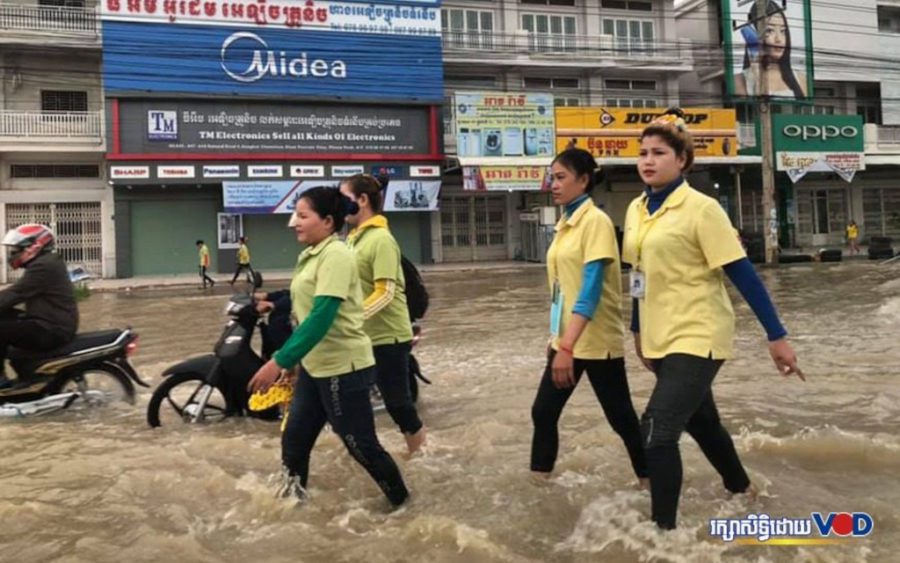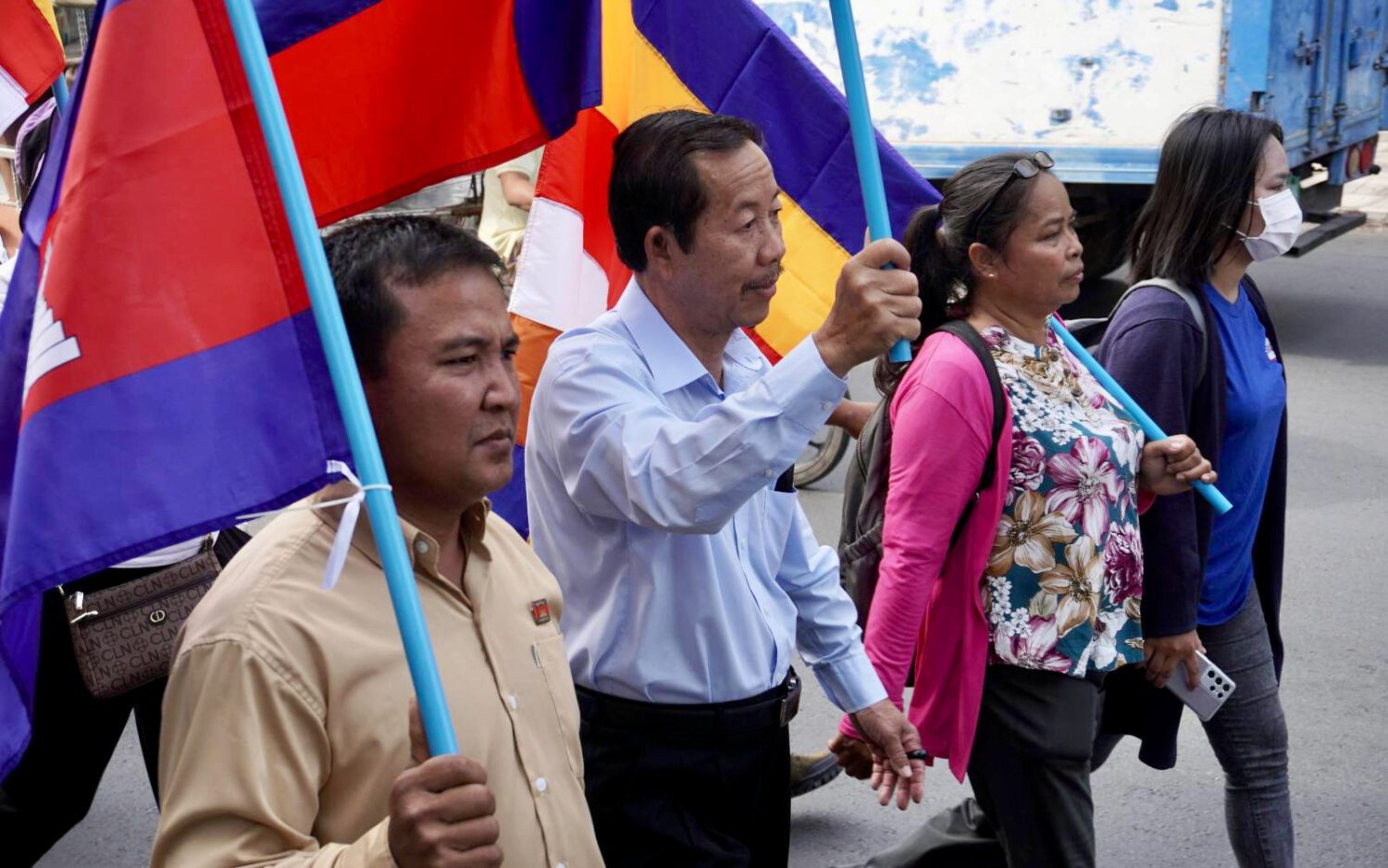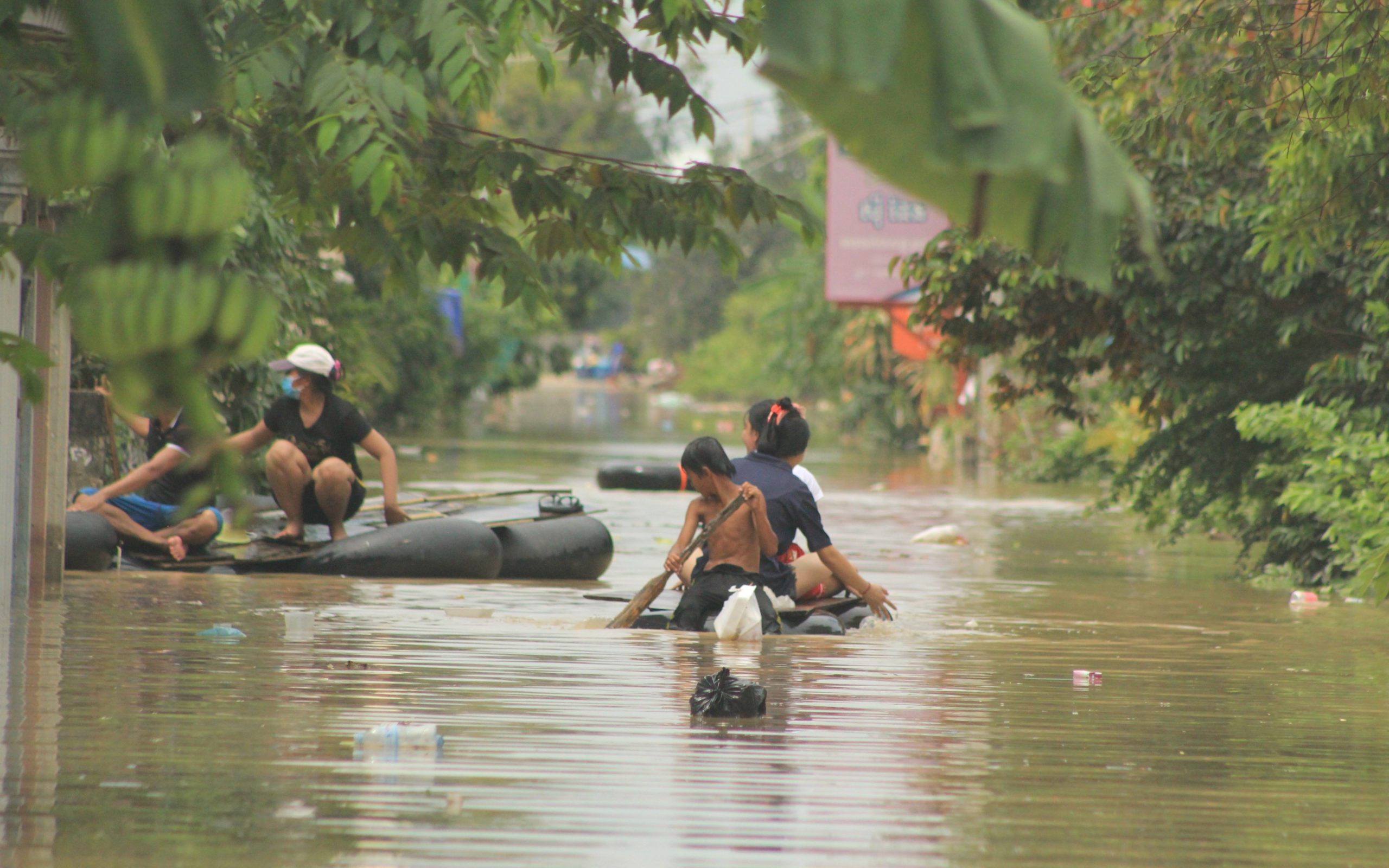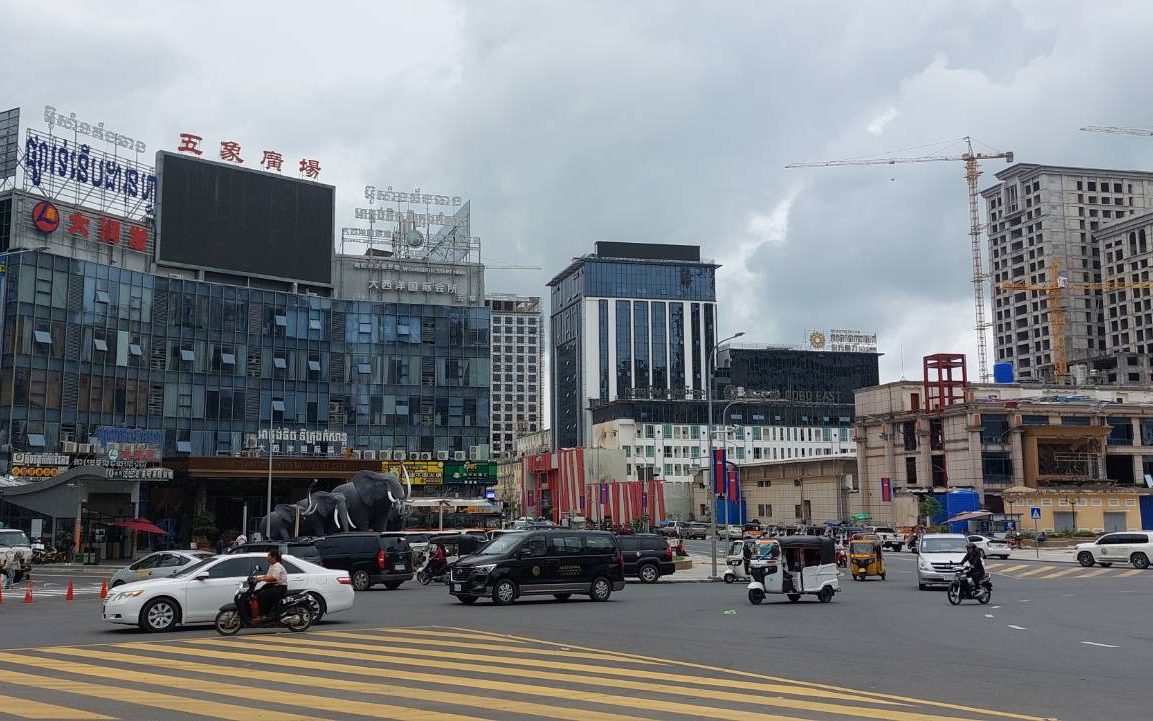With more heavy rainfall expected this weekend and ongoing flooding that has killed at least 21 people this month, Prime Minister Hun Sen cast doubt that the in-filling of capital lakes had contributed to severe flooding in Phnom Penh.
While visiting flood evacuation sites in Dangkao district on Thursday, Hun Sen said the main reason for flooding in Phnom Penh was that the city’s water drainage system could not absorb the heavy rainfall.
But he would not respond to anyone who raised the question of in-filled lakes causing more flooding, he said, and flood victims should know that the problem was caused by nature.
“Some raise [the issue of] filling up the lakes, saying that is why it has flooded, but I want to ask, who said so?” Hun Sen said.
“There is too much extra [water for] … the drain and canal system that we built, and even the Mekong river that is flooded, it’s also at capacity for this river, which can’t absorb all the water that flows from upstream,” Hun Sen said.
“It’s called a flood. Only the sea does not flood,” he added. “This [flooding] is called a natural disaster.”
In a July report, human rights groups said more than 1 million people were at increased risk of flooding and worsening food insecurity due to the ongoing in-filling of Phnom Penh’s lakes for development purposes, which has left dry an increasing proportion of the city’s wetlands that act as natural flood reservoirs during storm surges.
The Boeng Tompun and Choeng Ek wetlands in the base of the city stretch across 1,500 hectares — a third of which have already been filled in, according to satellite imagery of the area.
A study commissioned by Phnom Penh City Hall says at least 480 hectares of the capital’s wetlands would need to be preserved in order to prevent flood and wastewater issues, or some 25 to 30 million cubic meters of water annually would need to be managed by other means, potentially increasing flooding in low-lying parts of Phnom Penh and Takhmao City.
The premier, however, said this year Phnom Penh has been more fortunate compared to the flooding experienced in the capital in 2000 when roads remained underwater for days amid high water levels on the Tonle Sap, Tonle Bassac and Mekong rivers.
Indeed, on Friday, a hydrological station on the Bassac river in Phnom Penh measured a water level of under 7 meters — almost 4 meters lower than the “alarm level” recorded on the same day in 2000, according to Mekong River Commission figures.
But nationwide this month, more than 6,300 households have been displaced and over 53,000 affected by flooding, while more than 200,000 hectares of agricultural land was flooded, mostly in Battambang, Pursat and Banteay Meanchey provinces, according to government data.
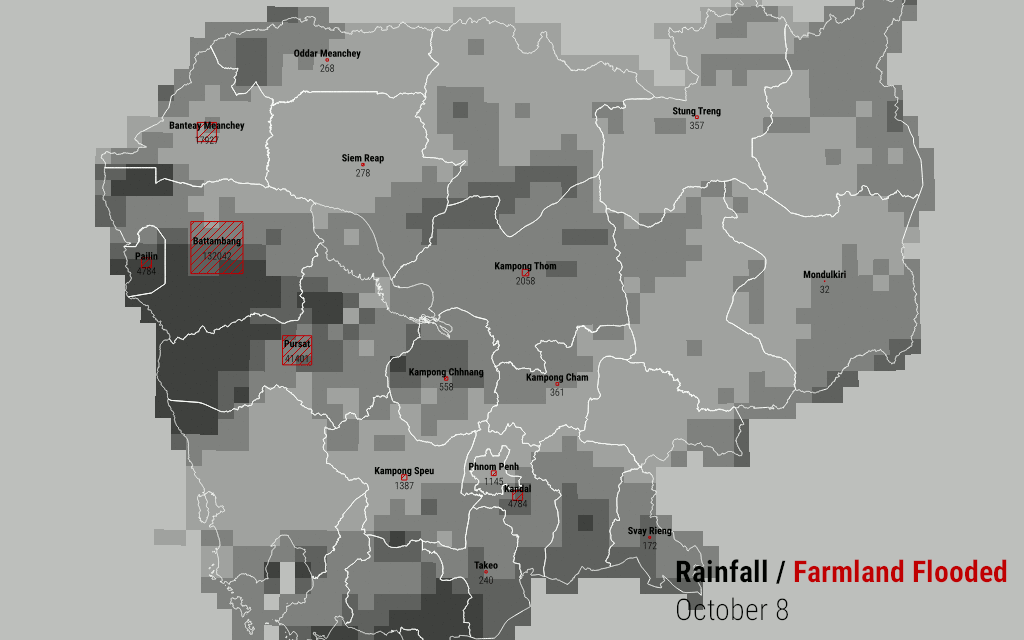
‘Get Smart’ About Wetlands
Climate change predictions for the Mekong river basin “might be coming true in Cambodia,” said Brian Eyler, author of Last Days of the Mighty Mekong and Southeast Asia director at the Washington-based Stimson Center.
The last two years have seen “abnormally dry” wet seasons, dropping the Mekong and Tonle Sap’s water levels to historical lows, Eyler said in an email on Thursday.
“Climate scientists have long predicted the wet season to be reduced by about 2-3 weeks on each end (making for much longer dry seasons) and when the rains come, they will come severely,” he said. “So a new normal could be prolonged droughts menaced by devastating infrequent storms that cause severe flooding in shocking degrees.”
The Water Festival ceremony at the end of this month marks the traditional end of the rainy season, which typically features daily downpours that persist for five months, Eyler said.
However, he added, “Intense late storms like this are uncommon.”
Nick Beresford, the U.N. Development Program’s representative in Cambodia, said specific climate events “cannot be tied to climate change alone,” but the ongoing flooding in the country pointed to the importance of Cambodia adopting adaptation policies.
Key infrastructure — from transport, energy and water to social services, health centers and schools — should be assessed for climate vulnerabilities, and their designs “climate-proofed,” he said in an email.
“Most importantly, land management, urban planning and disaster management policies also have to be strengthened and effectively enforced to address the additional risks caused by climate change, and to ensure that new developments are managed in a way that reduces Cambodia’s vulnerability to climate change,” Beresford said.
“Natural resources are an important and cost-effective component of this strategy, as forests and proper watershed management can play a crucial role in flood mitigation.”
Rapid development and unenforced land-use planning worsen the impacts of floods, he said.
Eyler agreed that Cambodia’s rampant development, including the in-filling of capital wetlands for real estate and industrial parks, was increasing the impacts of flooding on cities and communities.
“The list of no-longer-existent wetlands in Phnom Penh is extremely long and people 30 and older will remember a city that was once filled and surrounded by wetlands and urban lakes,” he said. “Those wetlands played a critical defense role of stopping floods from entering the city. Now they are filled in and water has no place to go but into people’s homes and to stick around in the streets creating a total mess and untold damage.”
Eyler said city planners needed to “get smart” and use its wetlands “as defense mechanisms otherwise Phnom Penh’s floods will get worse and worse.”
In addition, he said over the last three decades, the country has lost an “incredible amount” of forested land, which also defends against flooding and rising rivers.
Environment Ministry spokesperson Neth Pheaktra said in a message on Friday that the continuous rainfall in recent weeks could be “good evidence” to confirm earlier assessments from climate scientists about increased greenhouse gas concentrations and global warming’s link to tropical cyclones and heavy rainfall.
The Intergovernmental Panel on Climate Change has said it’s likely that the “frequency of heavy precipitation or the proportion of total rainfall from heavy rainfalls will increase in the 21st century over many areas of the globe,” especially in tropical regions.
“This year we noticed a very long drought condition during monsoon season which could be the result of global warming,” Pheaktra said.
The spokesperson listed a number of adaptation measures that “could be proposed in order to mitigate the risk” of climate change in Cambodia, especially from flooding: build more storage reservoirs in downstream areas; leave open spaces with more vegetation grass as much as possible, such as parks and gardens; build more resilient road, irrigation and drainage infrastructure; properly manage land to minimize impacts on the environment; as well as build large-scale dams upstream, which could have enough capacity to store large amounts of water from heavy rainfall.
But Pheaktra did not say whether the measures were part of the ministry’s current plans or goals.
Clarification: The article has been updated to clarify that Nick Beresford is the U.N. Development Program’s representative in Cambodia.


